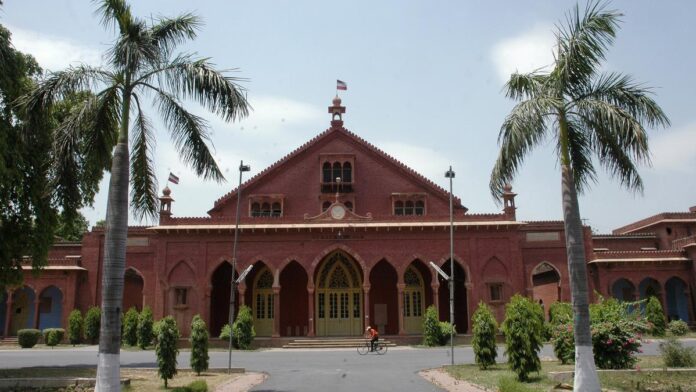
Aligarh Muslim University Campus.
| Photo Credit: Sandeep Saxena
The Supreme Court on Friday (November 8, 2024) overruled a 1967 verdict that held that the Aligarh Muslim University could not be considered a minority institution as it is a central university. The court said that case papers should be placed before the Chief Justice for setting up a fresh bench to decide the validity of the 2006 Allahabad HC verdict.
Pronouncing the majority verdict, Chief Justice D.Y. Chandrachud laid down tests for considering the issue of minority status of AMU.
Also read: Tracing the roots of Aligarh and its famous university, often hailed as a mini-India
The apex court by a 4:3 majority said the judicial records of the case should be placed before the CJI for setting up a fresh bench to decide the validity of a 2006 Allahabad High Court verdict.
In January 2006, the high court had struck down the provision of the 1981 law by which AMU was accorded minority status.

At the outset, CJI Chandrachud said there were four separate opinions, including three dissenting verdicts.
The CJI said he has written the majority verdict for himself and Justices Sanjiv Khanna, JB Pardiwala, Manoj Misra.
Justice Chandrachud said Justices Surya Kant, Dipankar Datta and Satish Chandra Sharma have penned their separate dissenting verdicts.
On February 1, grappling with the intractable issue of the AMU’s minority status, the top court said the 1981 amendment to the AMU Act, which effectively accorded it a minority status, only did a “half-hearted job” and did not restore to the institution the position it had prior to 1951.
Earlier, the BJP-led NDA government refused to accept the 1981 amendment to the AMU Act and insisted that the court should go by the five-judge constitution bench verdict in the S Azeez Basha versus Union of India case in 1967. The Constitution bench had then held that since the AMU was a central university, it cannot be considered a minority institution.
Also read: Government backs verdict denying AMU minority status
The university reserved 50% of seats in its postgraduate medical courses for Muslim students in 2005. This was challenged in the Allahabad High Court in Dr. Naresh Agarwal v Union of India (2005), which struck down the reservation policy. This led to AMU and the Union government appealing the decision in the Supreme Court in 2006. In 2014, the NDA Government withdrew it from the appeal in 2016, against the decision. AMU and other associations affiliated with the university proceeded with the challenge.
Those who put forward the view favouring a minority status for the institution, including veteran lawyer Kapil Sibal, contended that the mere fact that only 37 of the 180-member governing council is Muslim does not detract from its credentials as a Muslim minority institution.
Others like Solicitor General Tushar Mehta contended a university getting enormous funds from the Centre and having been declared an institution of national importance cannot claim to belong to a particular religious denomination.
They had also argued that once the Muhammadan Anglo-Oriental College transformed itself into a university after the 1951 amendment to the AMU Act and began receiving funds from the Central government, the institution surrendered its minority character.
A lawyer disfavouring minority status to the AMU had even claimed that it received over Rs 5,000 crore from the Central government between 2019 and 2023, nearly double the University of Delhi, a central university, got.
The row over the AMU’s minority status has been caught in a legal maze for the last several decades.
(With inputs from PTI)
Published – November 08, 2024 11:26 am IST
